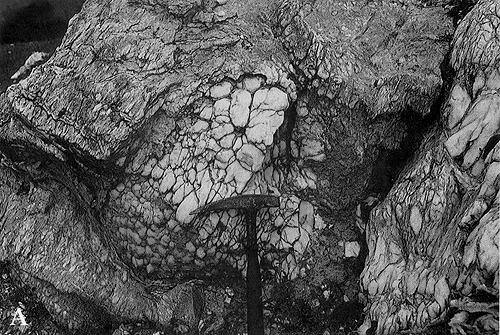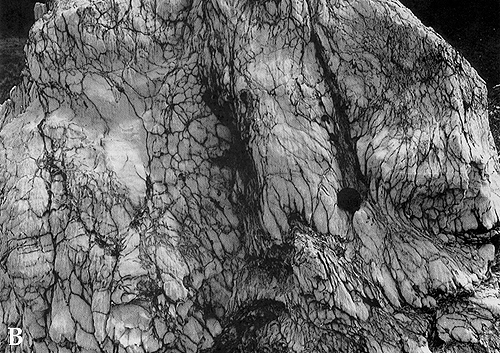

Nodular structure: composite nodules (A) and chicken-wire structure
(B)
Plate 171


Nodular structure: composite nodules (A) and chicken-wire structure
(B)
Plate 171
Single anhydrite nodules resulting from vadose diagenesis can aggregate into composite nodular masses of roughly equal dimensions (A) or coalesce laterally into "diagenetic beds" or crusts (B), which can be deformed by enterolithic folding (see plate 127). Crystalline, saccharoidal gypsum that replaces anhydrite when conditions become wetter is called alabastrino, from the old name "alabastro" given to gypsum quarried near Volterra in Tuscany, Italy, where the outcrops pictured here are found. Gypsum alabaster must not be confused with calcareous alabaster (see plate 162 A, B).
The nodules seen in plate 171 A are embedded in a groundmass of clastic gypsum particles mixed with terrigenous sand and clay. This means that they have been reworked by mechanical agents (gravity, storms, etc.) and transferred to deeper parts of the basin. No surprise, then, if one finds indicators of subaerial conditions in subaqueous sediments. Remember that only biogenic structures (trace fossils) cannot be found in reworked (allochtonous) position, simply because they are destroyed upon removal by erosion, slides, etc.
In composite nodules, the host sediment is reduced to thin films and the individual nodules are tightly packed, which is called chicken wire, or mosaic structure. This structure can invade considerable masses of sediments, where it destroys any trace of bedding (B).